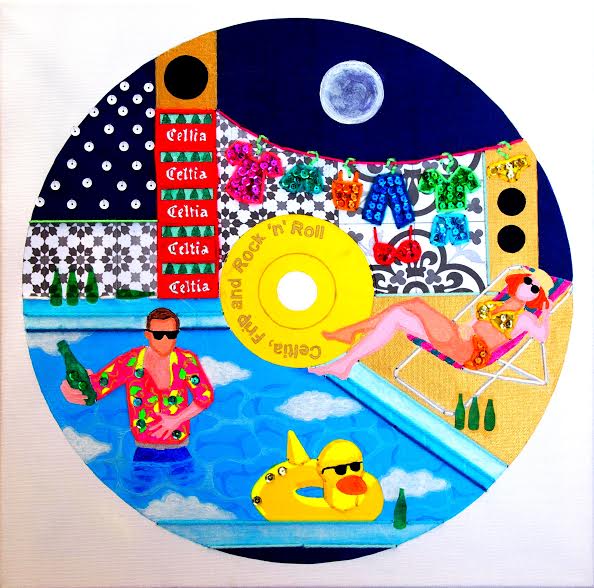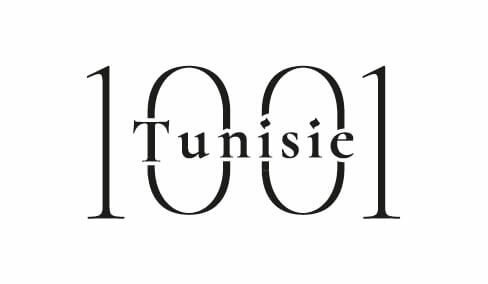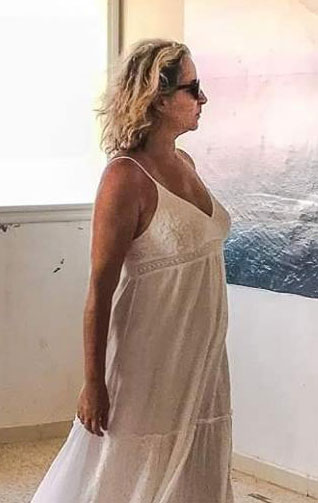
ILyes Messoudi is an artist. He works with humor and colors on a modernized and updated version of the 1001 nights. He reveals a Sherazade that lives the revolution, love, freedom, injustice, exclusion … From Paris where he lives, the young plastician thinks of his country, the love that carries him Acknowledging his mistakes and injustices. To find out more about his work, visit his website: http://ilyes90.portfoliobox.net/
Interview conducted by Amel DJAIT
1001tunisie: You live in Paris and there is no doubt that you are missing Tunisia, How do you think your country from there? Which regions, cities, memories, smells or flavors you miss most?
Ilyes Messoudi: I miss my country, no doubt! That is why I make my little Tunisia home, without being a communist. I often listen to Tunisian music and Tunisian cuisine. When I smell the smell of frying (Keftaji and fricassé) and the smell of coffee, I think of the perfumes that reign in the streets of Tunis. They set my memory on fire. I miss The sea, the Sahara and the sun terribly. My friends, my family, our garden, the rhythm of life, losing the notion of time …

OLYMPUS DIGITAL CAMERA
You worked on 1001 nights. What images of Tunisia come to you when you think of this work?
The love that one is forbidden to display.
An imam interprets the Koran wrongly.
People buy a sheep with a pack of beers during Eid.
A police officer arrests young cannabis users and smokes their joints afterwards.
A society forces a girl to marry her rapist.
A beautiful sun that sends a ray of hope to people who suffer.
In your vision of 1001 nights, your heroine is often rebellious. Modern and under construction what are its color, mood and claims?

OLYMPUS DIGITAL CAMERA
Scheherazade is a soul state that changes according to circumstances. She is at once sweet and rebellious, and seeks no comparison with man. She is conscious of her strengths and knows that man can not reach her without denying the fundamental role of the latter in society.
Her claim is the questioning of the injustices and taboos of society. My heroine advocates for the reconciliation of the Tunisian with himself and with all sorts of differences. The 1001 nights is a work that wants to be a socio-cultural revolution and that changes mentalities.
When you are in Tunisia, what are your favorite places?
In Tunisia, I especially love places by the sea and the south. I spent a good part of my childhood in El Zahra, in the southern suburbs of Tunis, where I made long coastal walks. The Palais Saint Germain is always mysterious to me. The northern suburbs of Tunis, too, are full of places that remind me of madness.
Which neighborhood has you marked most ?
The place that marked me the most is the city Hlel : Hay Hlél. I often went there to see a friend who made me discover this unusual neighborhood. Far from Lake El Sijoumi, the view is impregnable with pink flamingos flying over the city.
Because of the lack of resources, the houses are often not covered with cement or painted. They show several shades of red bricks that often change with the light and constitute a kind of giant mosaic. In the summer, on the rooftops of the houses that lead to each other, big wedding celebrations take place with fireworks.
And your taste memories?
My favorite flavors are Chez Salem ice cream, Ojja from Sabbat Dziri, a good fish grill at Kélibia, a cheesy escalope from Chez Allo, always succulent after a night out.

OLYMPUS DIGITAL CAMERA
In your palette of painter what color is Tunisia?
Tunisia does not have a single color. It is rather multicolored and its colors are bright and contrasted. The post-revolutionary Tunisia which fights against all sorts of conformisms and standardization, and fights for the right to difference is even more contrasted and colored
For the artist that you are, what is the best plan to visit Tunis, Djerba or the Kef? Do you have any favorite places to share with 1001tunisie readers?
In Tunis, the classic circuit remains unavoidable: the Medina, the northern suburbs and some places of the southern suburbs. I have not yet had the chance to visit Le Kef, but there will soon be a Jazz Festival not to be missed. I also recommend Bizerte and Kélibia during the summer season and during the short film festival. My favorite is always the Tunisian south, especially Nefta and the hotel Dar Hi. Ksar Ghilane is also a piece of paradise.
What is the landscape of Tunisia that you see in Watercolor and abstract painting?
I imagine a luminous watercolor, a still life representing a great feast of Tunisian delights. In abstract painting, I imagine Tunisia in aerial view through the clouds. A landscape in politics not clear.


 َAbonnez-vous
َAbonnez-vous

